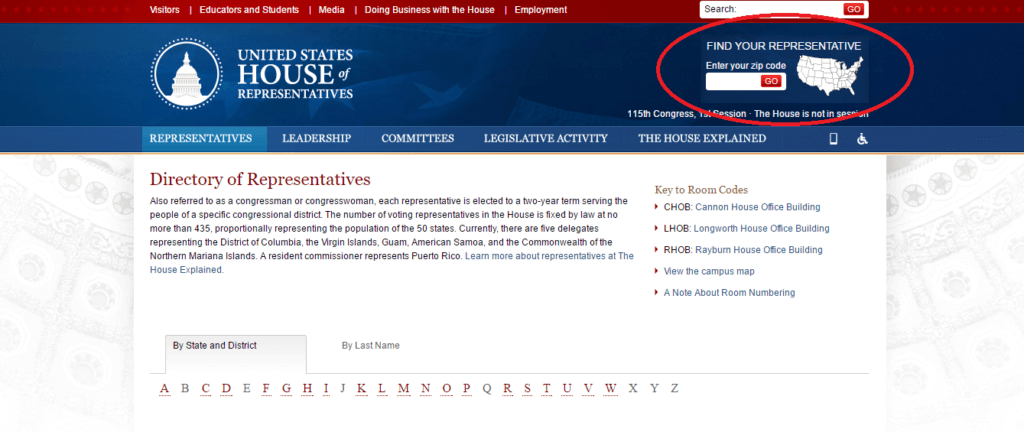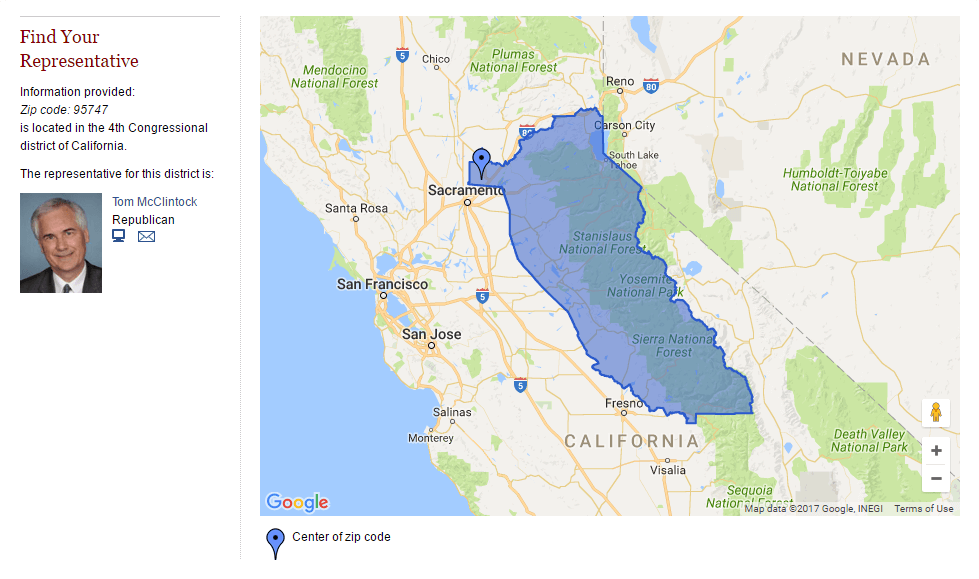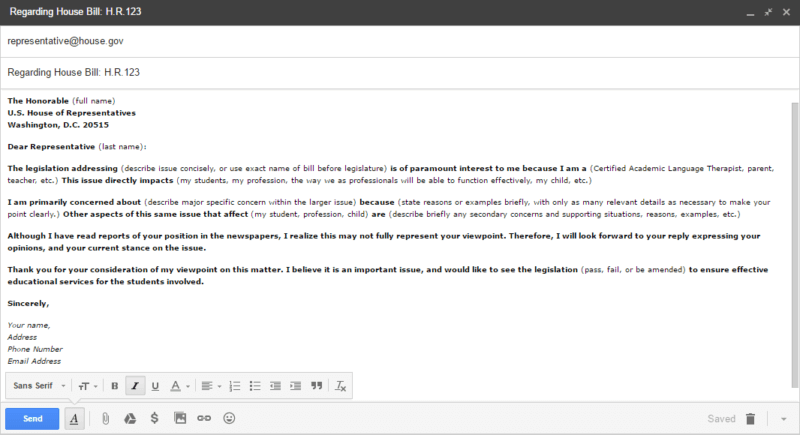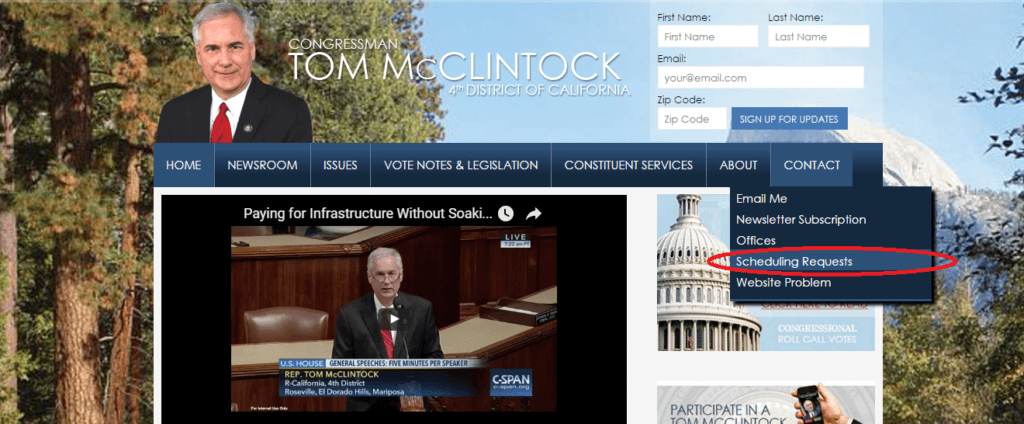Most of us wish we had voting power in Congress, but unfortunately filling a room with the 150 million registered U.S. voters isn’t a reasonable request. While you may not get to weigh in during local government meetings, there’s a reason we call our congresspersons “representatives.” Your local government representative makes some pretty big decisions, and with a little guidance from the constituents, your voice just might make it to D.C.
Before you can knock some sense into your representative, you need to know who you’re talking to. At www.house.gov, you can easily enter your zip code to kick things off.

With nothing but the zip code, the site tells you who your local government representative is, what region (s)he represents and where to get more information. Thank God we were born in the era of Internet.

Click the representative’s name and, voila, get ready to jot your thoughts down. You just have to decide what medium you’ll use to communicate. Some methods are simple, and some take planning, but the more effort you put into it, the more your voice could be heard.
DECIDE FOR YOURSELF WHICH WORKS BEST.
1. The 140-Character Argument

The good thing about President Trump’s Twitter fingers? Tweets have become a perfectly acceptable way of talking politics. By now, most representatives have joined the bandwagon, and often you can find a handle right on the first page of the website. In the case of my representative, it’s an icon at the top that takes me to his feed. Find the handle and get drafting. Stay away from hate speech (aka please don’t copy the sample tweet above) and keep things professional. No staffer will take you seriously if you’re calling them names your grandmother would be ashamed of when trying to be political.
2. Flood the Inbox

Emails don’t produce the most effective results, but they do pile up and show your representative that the people have concerns over current bills in the House. The more personal you make your email, the better. If writing isn’t your strong suit, there are plenty of templates online you can use as a starting point. The sample email above shows a message from www.altaread.org. And just like with Twitter, it’s important to stay professional no matter how unprofessional your thoughts are.
3. Dial Them the “Old-Fashioned” Way

If you’re too passionate about an issue to risk letting your thoughts get lost in the noise, pick up the phone and dial your rep’s office. If you’re unable to find their D.C. office number on their webpage, you can find a directory of all representatives’ numbers here. You can expect the office assistant to answer the phone, but don’t worry because they’re the ones who will take note of your concern. Tell them what bill you’re stressed about and feel confident in your contributions to the greater good.
4. Use a Pen and Ink

Some messages are too important to be delivered digitally. The art of handwriting got lost in the technology boom, and when a pen-and-ink letter finds its way to a rep’s office, it makes an impact. Slip it in an envelope, lick it closed and slap a stamp on it. You still know how to address an envelope, right?
5. Schedule a Meet and Greet

Warning: This method is not for the faint of heart. If you have a perspective that people may not have voiced before, or if you’re leading a revolution and want your representative on your side, schedule a time to chat in person. A meeting won’t serve you much good if you’re in a time crunch—congresspersons only visit their districts every now and then—but they’re certainly more memorable because they show the extremity of your beliefs. Most representatives have info for scheduling on their websites, but if you can’t find that, send an email requesting to chat in person.



















